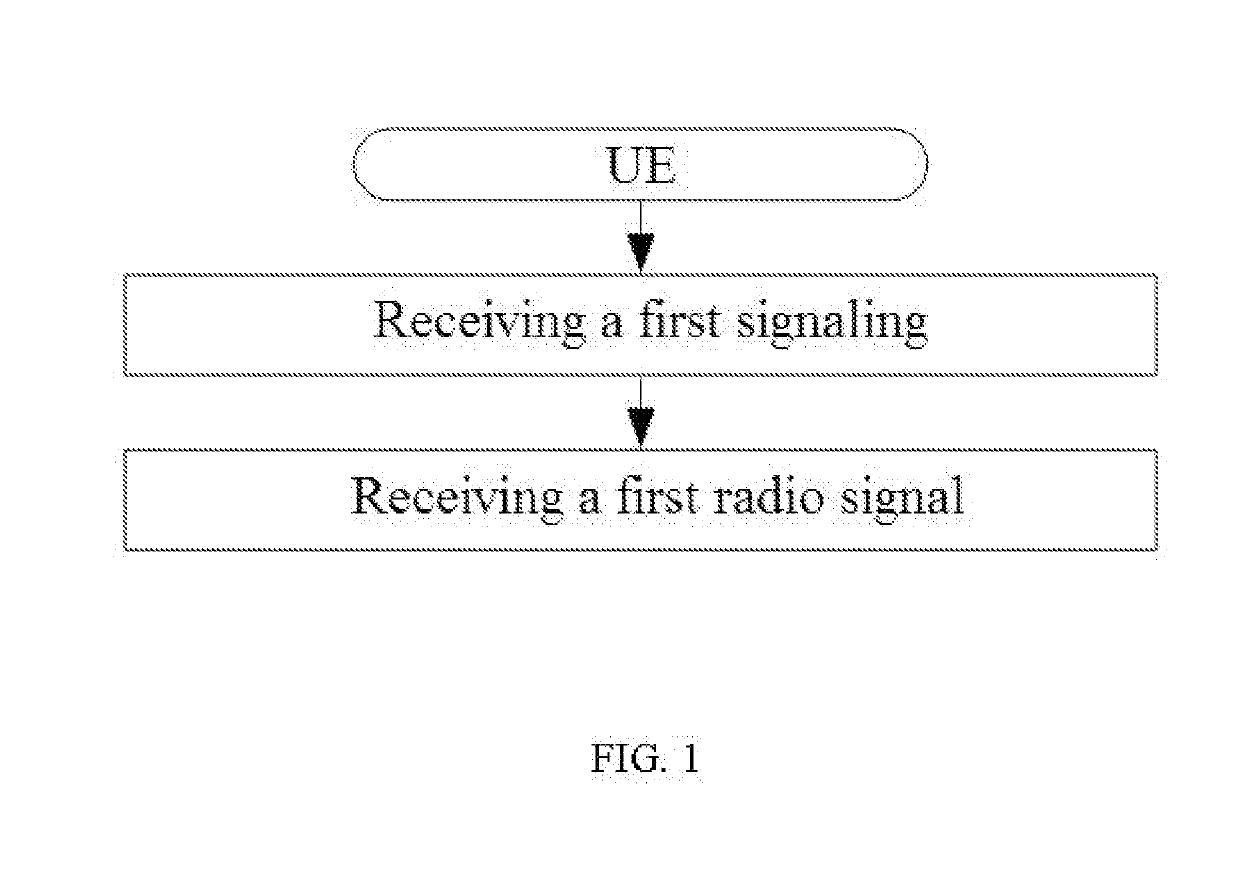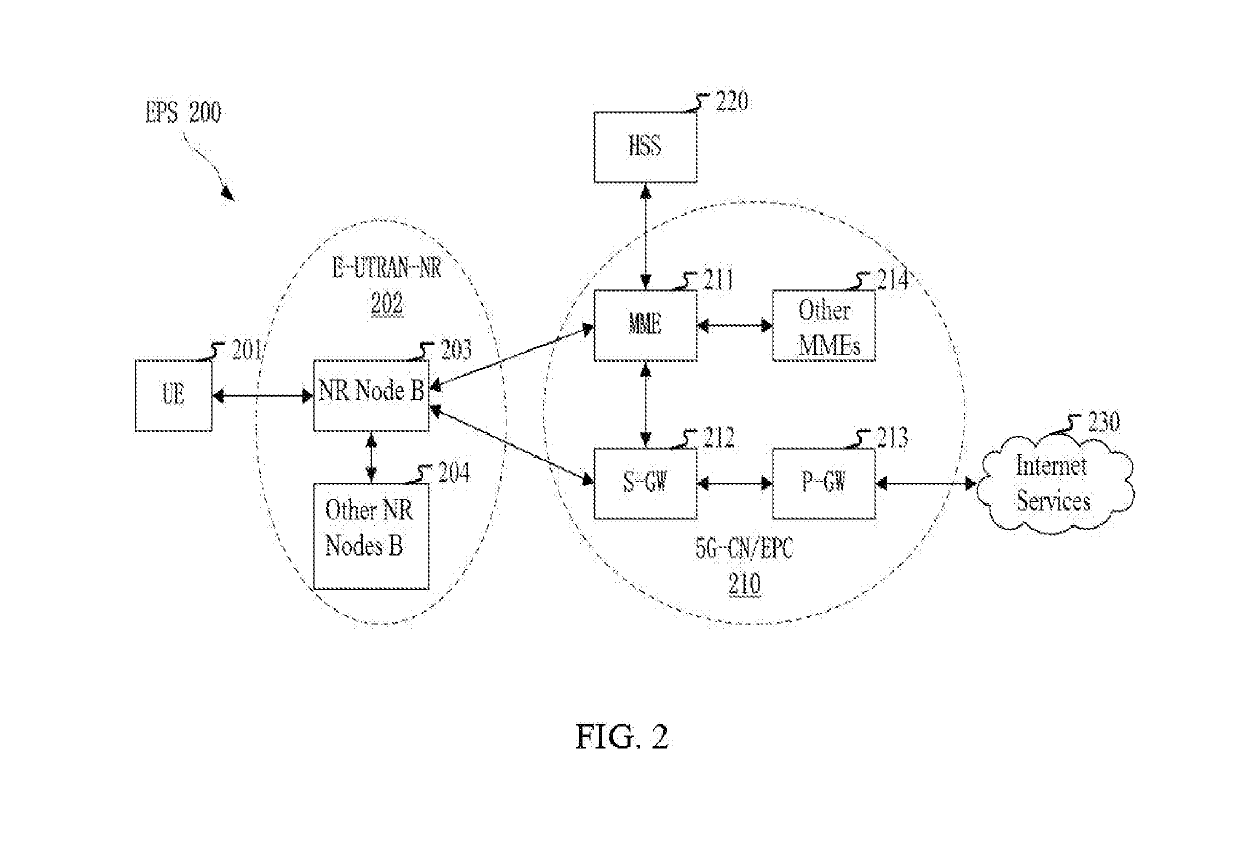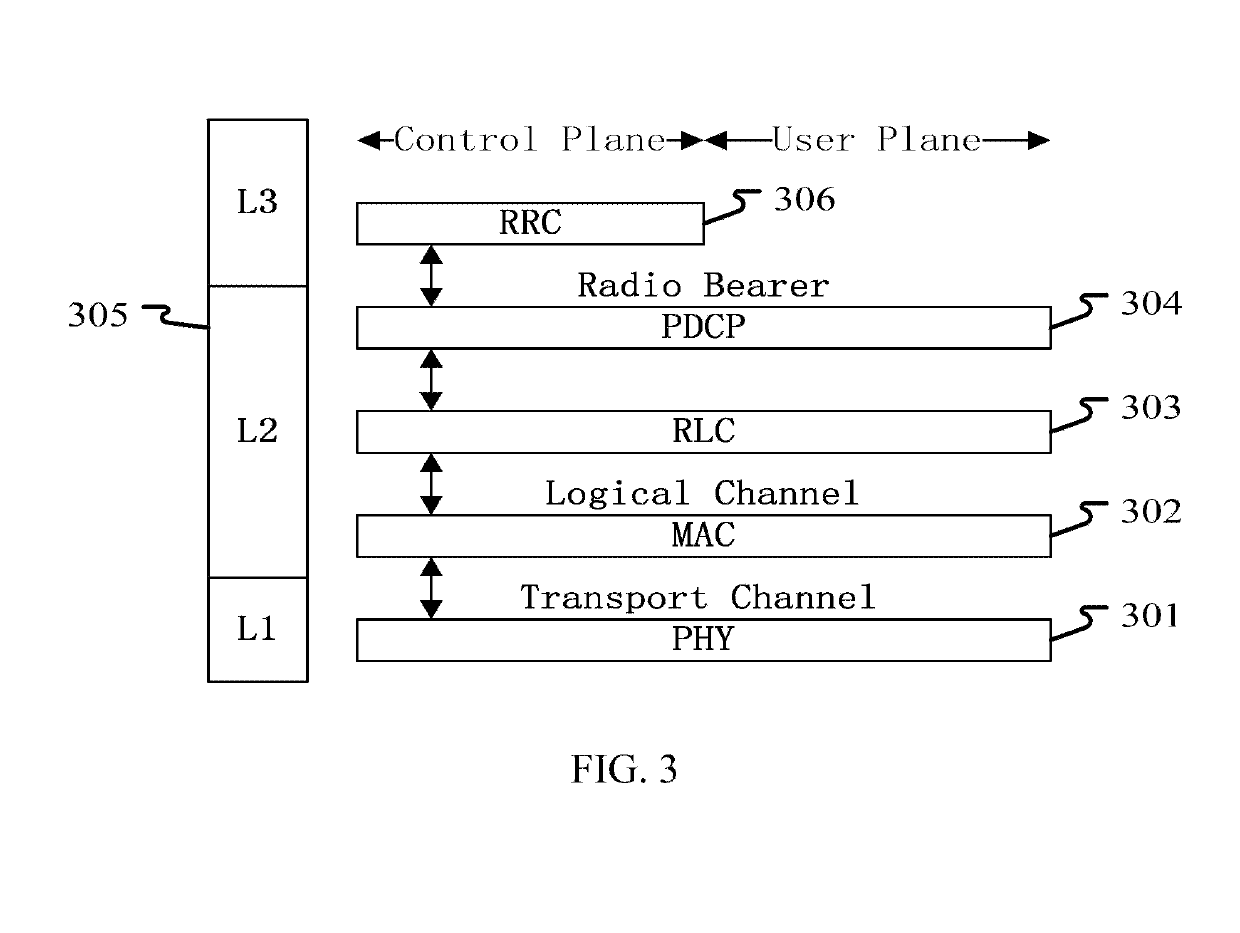Method and device in wireless transmission
a wireless transmission and wireless technology, applied in the field of mobile communications, can solve problems such as problems such as reliability of wireless transmission, and achieve the effects of reducing the delay of retransmission, ensuring the quality of retransmission, and keeping the robustness of downlink transmission all the tim
- Summary
- Abstract
- Description
- Claims
- Application Information
AI Technical Summary
Benefits of technology
Problems solved by technology
Method used
Image
Examples
embodiment 1
[0179]Embodiment 1 illustrates an example of a flowchart of a first signaling and a first radio signal, as shown in FIG. 1.
[0180]In Embodiment 1, the UE in the present disclosure receives a first signaling, and receives a first radio signal, the first radio signal carrying a first bit block. Herein, the first signaling is a physical layer signaling, the first signaling is used for determining a transmission format corresponding to the first radio signal, and the first bit block includes a positive integer number of bits; the transmission format corresponding to the first radio signal is one transmission format in a first format set, and the first format set includes a first transmission format and a second transmission format; a radio signal corresponding to the first transmission format includes P radio sub-signal(s), each of the P radio sub-signal(s) carries the first bit block, each of the P radio sub-signal(s) is transmitted by a same antenna port group, and the P is a positive ...
embodiment 2
[0212]Embodiment 2 illustrates an example of a diagram of a network architecture, as shown in FIG. 2.
[0213]FIG. 2 illustrates a network architecture 200 of Long-Term Evolution (LTE), Long-Term Evolution Advanced (LTE-A) and future 50 systems. The LTE, LTE-A and 50 system network architecture 200 may be called an Evolved Packet System (EPS) 200. The EPS 200 may include one or more UEs 201, an Evolved UMTS Terrestrial Radio Access Network-New Radio (E-UTRAN-NR) 202, a 5G-Core Network / Evolved Packet Core (5G-CN / EPC) 210, a Home Subscriber Server (HSS) 220 and an Internet Service 230. Herein, the UMTS represents Universal Mobile Telecommunication System. The EPS may be interconnected with other access networks. For simple description, the entities / interfaces are not shown. As shown in FIG. 2, the EPS provides packet switching services. Those skilled in the art are easy to understand that various concepts presented throughout the present disclosure can be extended to networks providing c...
embodiment 3
[0218]Embodiment 3 illustrates an example of a diagram of an embodiment of a radio protocol architecture of a user plane and a control plane, as shown in FIG. 3.
[0219]FIG. 3 is a diagram illustrating an embodiment of a radio protocol architecture of a user plane and a control plane. In FIG. 3, the radio protocol architecture of a UE and a gNB is represented by three layers, which are layer 1, layer 2 and layer 3 respectively. The layer 1 (L1) 301 is the lowest layer and performs signal processing functions of each PHY layer. The layer 1 is called PHY 301 in this paper. The layer 2 (L2) 305 is above the PHY 301, and is in charge of the link between the UE and the gNB via the PHY 301. In the user plane, the L2 305 includes a Medium Access Control (MAC) sublayer 302, a Radio Link Control (RLC) sublayer 303, and a Packet Data Convergence Protocol (PDCP) sublayer 304. All the three sublayers terminate at the gNB of the network side. Although not described in FIG. 3, the UE may include se...
PUM
 Login to View More
Login to View More Abstract
Description
Claims
Application Information
 Login to View More
Login to View More - R&D
- Intellectual Property
- Life Sciences
- Materials
- Tech Scout
- Unparalleled Data Quality
- Higher Quality Content
- 60% Fewer Hallucinations
Browse by: Latest US Patents, China's latest patents, Technical Efficacy Thesaurus, Application Domain, Technology Topic, Popular Technical Reports.
© 2025 PatSnap. All rights reserved.Legal|Privacy policy|Modern Slavery Act Transparency Statement|Sitemap|About US| Contact US: help@patsnap.com



